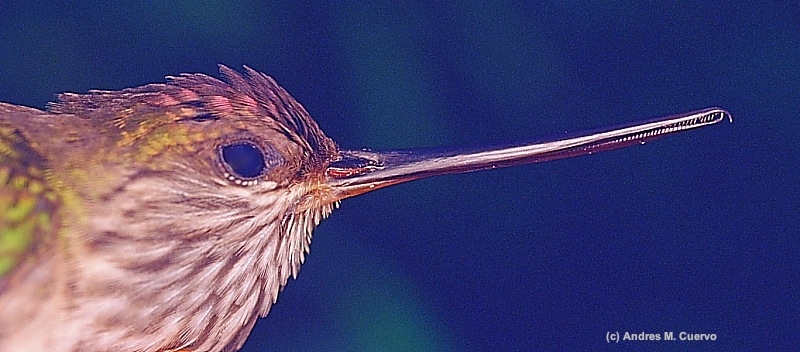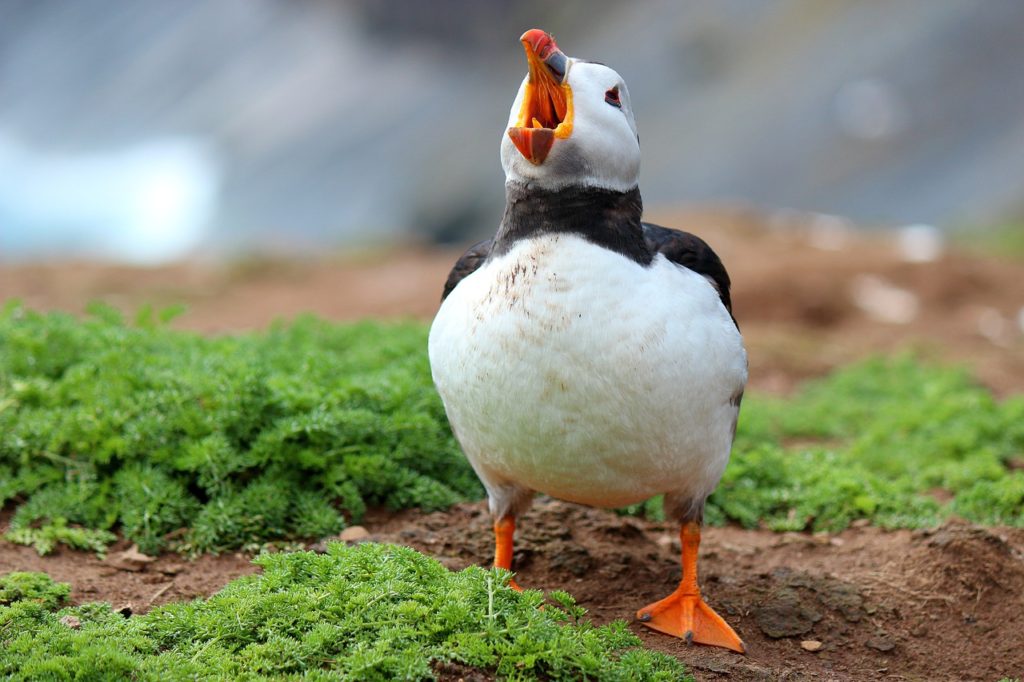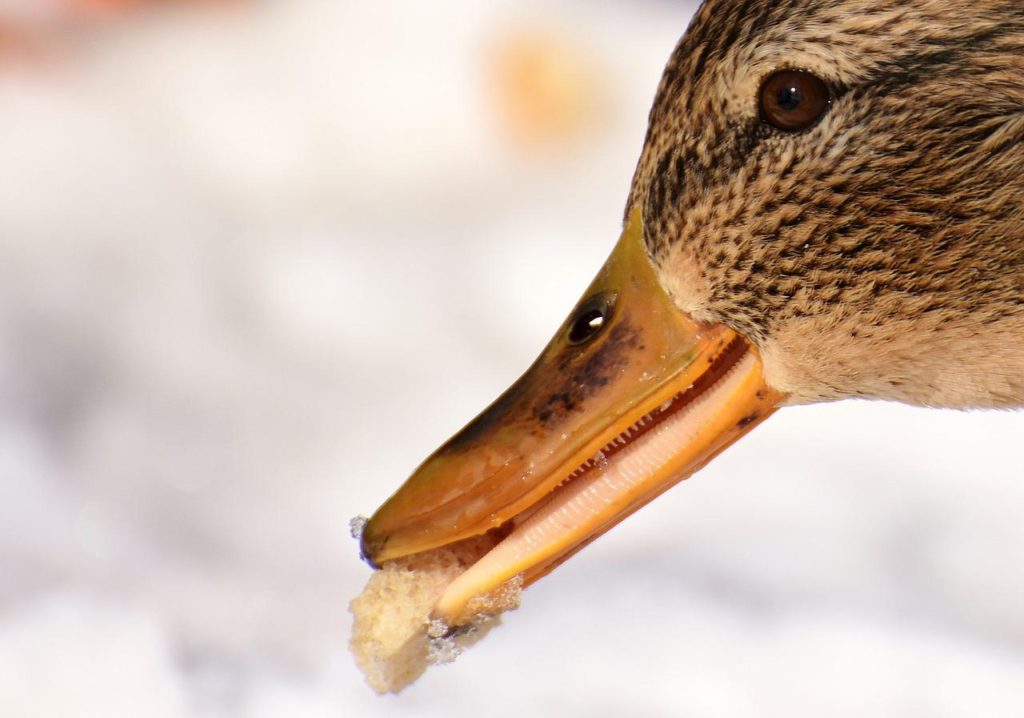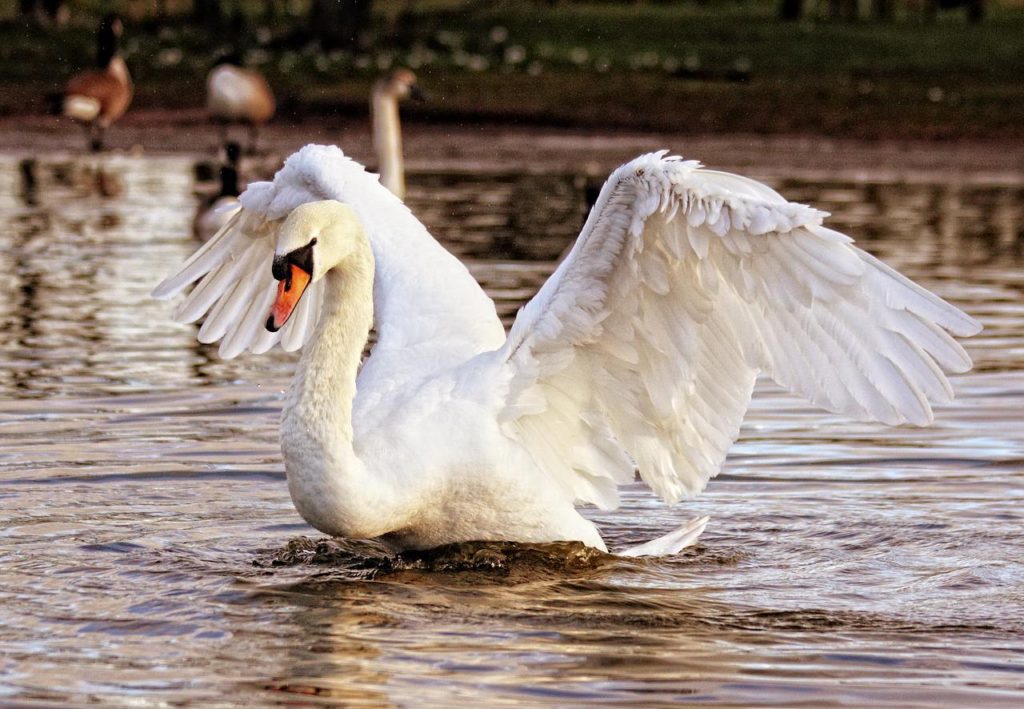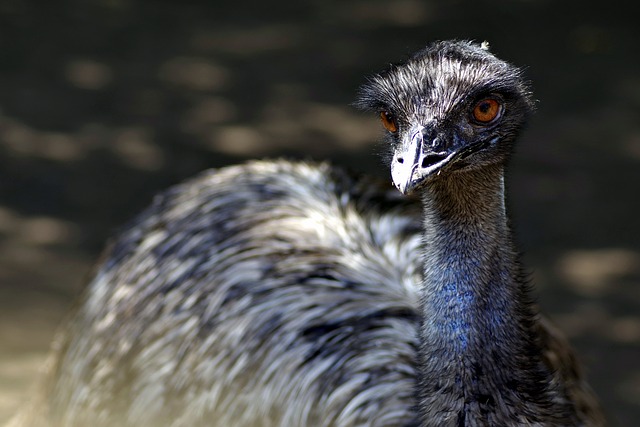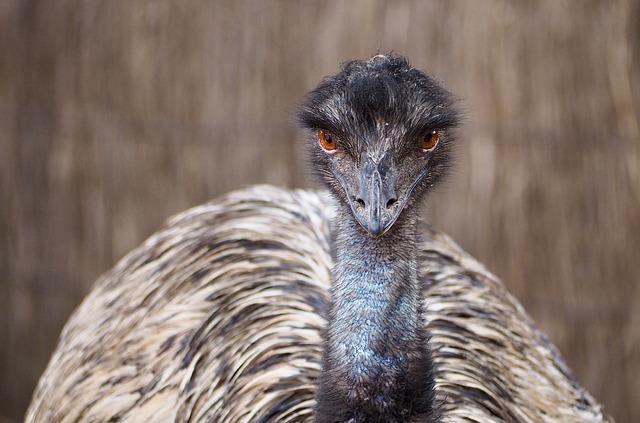
Birds do not have teeth. However, there are quite a few that really look like they do! These birds have evolved special beaks which help them to perform important functions. So here are some of the most amazing birds with “teeth,” and what you’ll want to know about them.
Toucan
Toucans have large beaks that depending on the species can be more than half of their entire total length. Their huge beaks have forward-facing serrations that look like teeth. And because of this, it was originally believed they were mostly carnivorous and ate fish.
However, while they do eat insects, eggs, and the nestlings of other birds, toucans mainly eat fruit. Their long beaks allow them to grab fruit on faraway branches and those jagged tooth-like serrations help them to peel it.
Greylag Goose
This large gray goose species is the ancestor of most breeds of domestic geese. While they may look scary, the pointy serrations on their beaks actually function to help the geese to uproot and tear up grass. The serrations are known as tomia and are made of cartilage.
When their beaks are open, greylag geese also appear to be birds with teeth on their tongues! That’s because, on their tongues, they have spiny papillae which are sharper yet not as hard as the tomia on their beaks. Their spiny tongues help them to shred and maneuver their food before swallowing it.
Canada Goose
This recognizable and common goose species has tomia running down the sides of its beak to help it to grip and cut vegetation. These tooth-like projections also help it to filter feed and even crush its food.
Canada geese are actually considered to be pests in many areas because flocks will often feed on grass and make quite a mess with the waste they produce. Golf courses, public parks, swimming pools, and docks are some of the most common places these toothy birds can be a nuisance.
Tooth-Billed Pigeon
Despite being the national bird of Samoa, this is not a bird you’re likely to see. That’s because due to overhunting and habitat loss the tooth-billed pigeon is nearly extinct.
Like other birds with teeth, the tooth-billed pigeon actually has a specially adapted beak. Its unique orange-colored beak has a jagged tip which it used to saw through tough seeds. Because it is closely related to the extinct dodo bird, the tooth-billed pigeon is also known as the “little dodo”.
Totodu74/Wikimedia Commons/CC BY-SA 3.0
Tooth-Billed Hummingbird
The fast-flying tooth-billed hummingbird is quite large for a hummingbird species, and it has a very long and straight beak. Males have a small hook at the tip of their beaks and even more prominent tooth-looking serrations than females.
They also have brighter plumage than the females as well. In addition to feeding on nectar from flowers, the tooth-billed hummingbird’s long serrated beak helps it to catch small insects and spiders.
Andres Cuervo/Wikimedia Commons/CC BY-SA 2.0
Puffin
Puffins are stocky birds with short wings, a large beak, and mostly black or black and white plumage. These seabirds are known for holding large numbers of fish crosswise in their beaks while hunting for more. One reason they are able to accomplish this is that they have jaws that come together in a parallel manner and exert equal amounts of pressure along the entire length of the beak.
Another is that inside their beaks they have tooth-looking spines called denticles. The denticles point towards their throat And by pushing the fish against their denticles with their tongues, puffins can swim underwater and catch multiple fish without losing their grip on the fish they are already holding.
Seagull
If you were to see a seagull open its beak wide enough you’d probably think that these are birds with teeth. That’s because similar to puffins, they also have denticles to help them hold onto their food.
These omnivores are adaptable and opportunistic feeders and will eat just about anything from fish to garbage. And because seagulls can actually unhinge their jaws, it allows them to get even the largest of meals down their gullet.
Tooth-Billed Bowerbird
This species is also called the tooth-billed catbird. And it gets the “tooth-billed,” in both of these names because of its notched tooth-like beak. These notches help it to cut young leaves which along with fruit make up the majority of its diet.
Male tooth-billed bowerbirds also use the notches in their beaks to gnaw through the stems of leaves that they use for a very important purpose, their mating ritual. They collect the leaves and then manipulate them into a decorative stage with the pale underside of the leaves facing up to attract a mate.
Francesco Veronesi/Wikimedia Commons/CC BY-SA 2.0
Mallard
You don’t have to go far to see birds with teeth. A trip to the local duck pond will often do because even mallards have toothy-looking beaks.
That’s right if you look closely mallards along with most other types of ducks have lamellae, comb-like projections that run down the sides of their beaks. The lamellae are actually part of the beak and function to strain small pieces of plant matter and other food items from the water just like a filter.
Merganser
Different from other types of ducks, mergansers don’t have lamellae. That’s because they eat fish. So instead they have thin, sharp, serrated beaks. The intimidating serrations help to grasp the fish and ensure that they don’t escape. These are diving ducks that hunt fish below the surface of the water. For this reason, they are also commonly called “fish ducks”.
Archaeopteryx
These were prehistoric birds with teeth, real teeth. Archaeopteryx is considered to be the first bird and therefore represents the transitional form from reptiles to birds.
In addition to a full set of real teeth, this species had feathers, 3 claws on each wing, and a mixture of bird-like and reptilian features. It is believed that it was possibly able to glide or even fly. Archaeopteryx lived around 150 million years ago and was about the size of a common raven.
Start Shopping for Birding Supplies!
What Do Crows Eat?
With roughly 40 different species, crows are a common sight in most places around the world. And while most of us are familiar with their appearance and harsh vocalizations, their diet is not as obvious. So what do crows eat? Here's what you'll want to know. What Do...
What Are Crows Good For?
Crows are widely considered to be pests. However, these large and highly intelligent black birds actually serve quite a few important functions in the environment. So what are crows good for? Here's what you'll want to know. Pest And Parasite Management Crows are...
How Long Do Swans Live?
Swans are graceful and beautiful creatures and as such, people have many questions about them. They want to know about their mating rituals, their diet, their preferred habitats, and even their lifespans. How long do swans live for anyway? Swan lifespans actually vary...
Are Crows Good Pets?
People all around the world see and hear crows on a daily basis. Although these intelligent and dark birds are practically ubiquitous, most people don't think of them as being household pets. Are crows good pets? The general consensus is that crows do not make...
Are There Crows In Australia?
Crows are remarkably smart birds that also happen to be extremely adaptable. They navigate unfamiliar circumstances via observation and interaction. Crows reside in locations all over the globe. While they do not live in certain parts of South America, they do reside...
What Do Swans Eat?
Swans are famously long-necked birds that are symbols of romance, love, beauty, and purity. Since these waterbirds have so many admirers, people often wonder about their eating habits, behaviors, and more. What do swans eat, anyway? Swan Basics Swans typically live in...
Birds That Look Like Owls
Owls are typically solitary and mainly nocturnal birds. And although these well-known hooting creatures have a rather distinctive physical appearance, there are actually various other kinds of birds that resemble owls closely. And people sometimes mix them up. So...
Why Are Swans Protected?
Swans are graceful and gorgeous creatures. They also happen to have protection in the United Kingdom, interestingly enough. Why are swans protected there, anyway? And does the Queen own all the swans? Yes, she actually owns any mute swans that are unclaimed in both...
Do Geese Fly?
Although geese are clearly birds, there are many individuals who do not necessarily associate them with flying. So, do geese fly? The honest answer is that these waterfowl do. They do not exactly slouch in the flying department, either. Many people are pleasantly...
Are Geese Dangerous?
Geese, in brief, are waterbirds that are quite substantial in size. Since they're often spotted on golf courses, at schools, and in community parks, people understandably tend to wonder whether they're safety threats. Are geese dangerous? Why Geese Attack...
Do Swans Mate For Life?
Swans are famously elegant waterbirds that are known for their sizable bodies, webbed feet, and lengthy necks. People often associate them with romantic imagery and monogamy. Do swans mate for life? You can find the response to that common and rather fascinating...
When Do Cicada Killers Come Out?
Whether you dread them each year or are waiting for them to emerge and control the cicada population you may be wondering, “When do cicada killers come out? The answer is they come out each summer in late June or July. Here’s what you’ll want to know. Cicada Killer...
Are Cicada Killers Dangerous?
One look at one of these huge wasps buzzing around, your yard, and it’s only natural to ask, “Are cicada killers dangerous?” Fortunately, these wasps are mild-mannered. But here’s what you’ll want to know. Cicada Killer Wasps Basics Cicada killers emerge from the...
What Are Black Swans?
What are black swans? Black swans (Cygnus atratus) are sizable waterbirds. This species primarily appears in Australia's southwestern and southeastern portions. The black swan is nomadic in its homeland. This bird, true to its name, is mostly black. Although the bird...
What Do Cicada Killers Eat When There Are No Cicadas?
What do cicada killers eat when there are no cicadas? Well, while cicada killer wasps do hunt cicadas, the adults don’t actually eat them or kill them, their young do. Read on to learn more! The Cicada Killer Diet While you may have seen cicada killer wasps flying...
Do Cicada Killer Wasps Sting?
As one of the biggest species of wasp in North America the cicada killer wasp can be intimidating. And because of their size, appearance, and scary-sounding name, many people wonder, “Do cicada killer wasps sting? The answer is yes and no, and here’s what you’ll want...
Emu Facts
Did you know? One emu egg can make an omelet that can feed up to six adults. Did you know that the emu is the only bird with calf muscles? Can an emu walk backward? Let us find out by exploring some of the most jaw-dropping emu facts. Emus Have Amazingly Powerful Legs...
Rhea Facts
Doting dads, did you know the male rhea builds the nest, incubates the eggs, and takes care of the young? The rheas are paragons of parental care. It’s a bird like no other, and you will be surprised by the following rhea facts. Rheas Are One Of The Best Dads In The...
Alligator Snapping Turtle Facts
Flightless Australian Birds
There are over sixty species of flightless birds in the world. These birds have lost their capability to fly through evolution, and several of them live in the “land Down Under.” So here’s a list of all the flightless Australian birds. Emu The emu is a large...




